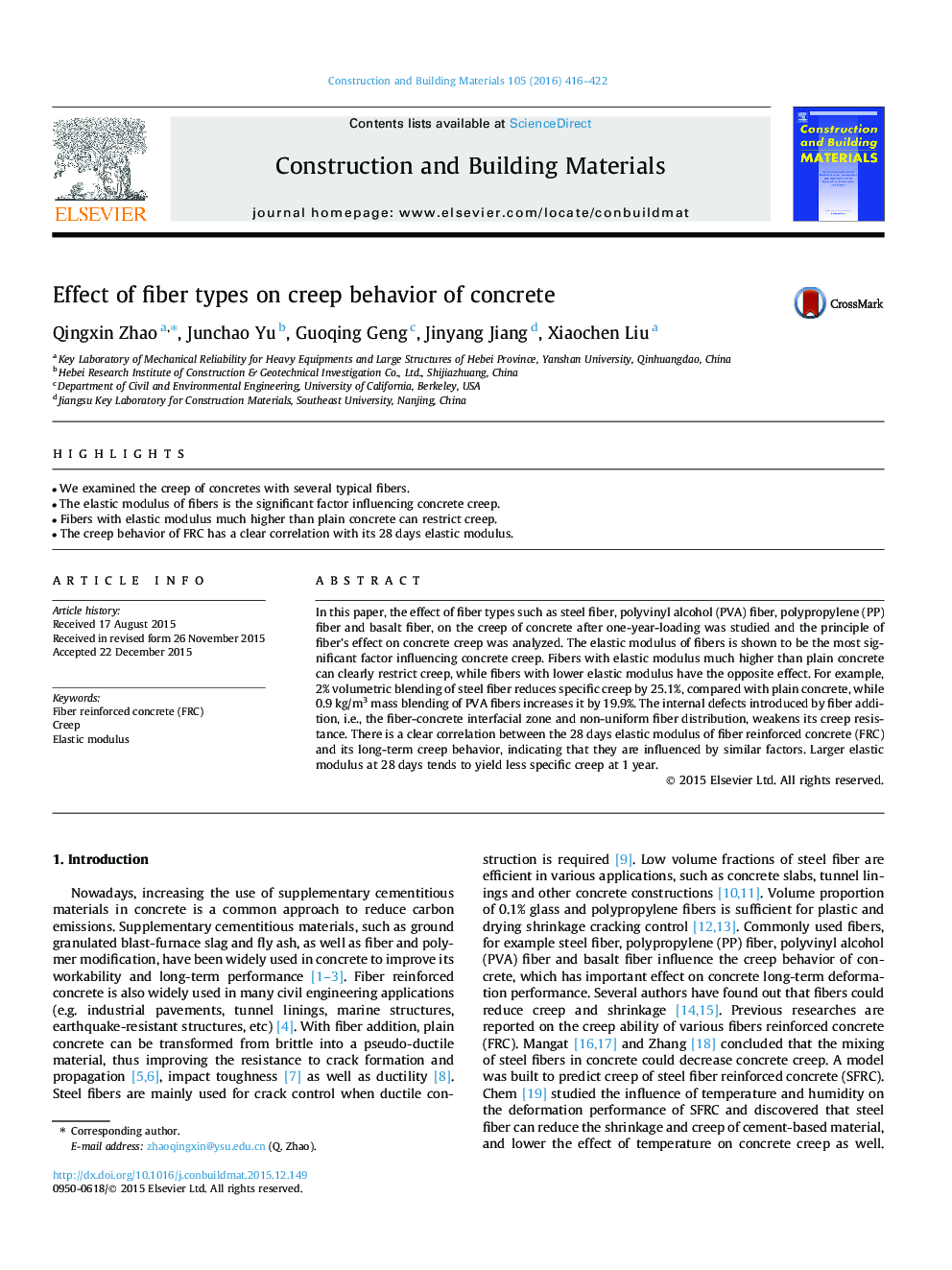| Article ID | Journal | Published Year | Pages | File Type |
|---|---|---|---|---|
| 6719687 | Construction and Building Materials | 2016 | 7 Pages |
Abstract
In this paper, the effect of fiber types such as steel fiber, polyvinyl alcohol (PVA) fiber, polypropylene (PP) fiber and basalt fiber, on the creep of concrete after one-year-loading was studied and the principle of fiber's effect on concrete creep was analyzed. The elastic modulus of fibers is shown to be the most significant factor influencing concrete creep. Fibers with elastic modulus much higher than plain concrete can clearly restrict creep, while fibers with lower elastic modulus have the opposite effect. For example, 2% volumetric blending of steel fiber reduces specific creep by 25.1%, compared with plain concrete, while 0.9Â kg/m3 mass blending of PVA fibers increases it by 19.9%. The internal defects introduced by fiber addition, i.e., the fiber-concrete interfacial zone and non-uniform fiber distribution, weakens its creep resistance. There is a clear correlation between the 28Â days elastic modulus of fiber reinforced concrete (FRC) and its long-term creep behavior, indicating that they are influenced by similar factors. Larger elastic modulus at 28Â days tends to yield less specific creep at 1Â year.
Related Topics
Physical Sciences and Engineering
Engineering
Civil and Structural Engineering
Authors
Qingxin Zhao, Junchao Yu, Guoqing Geng, Jinyang Jiang, Xiaochen Liu,
